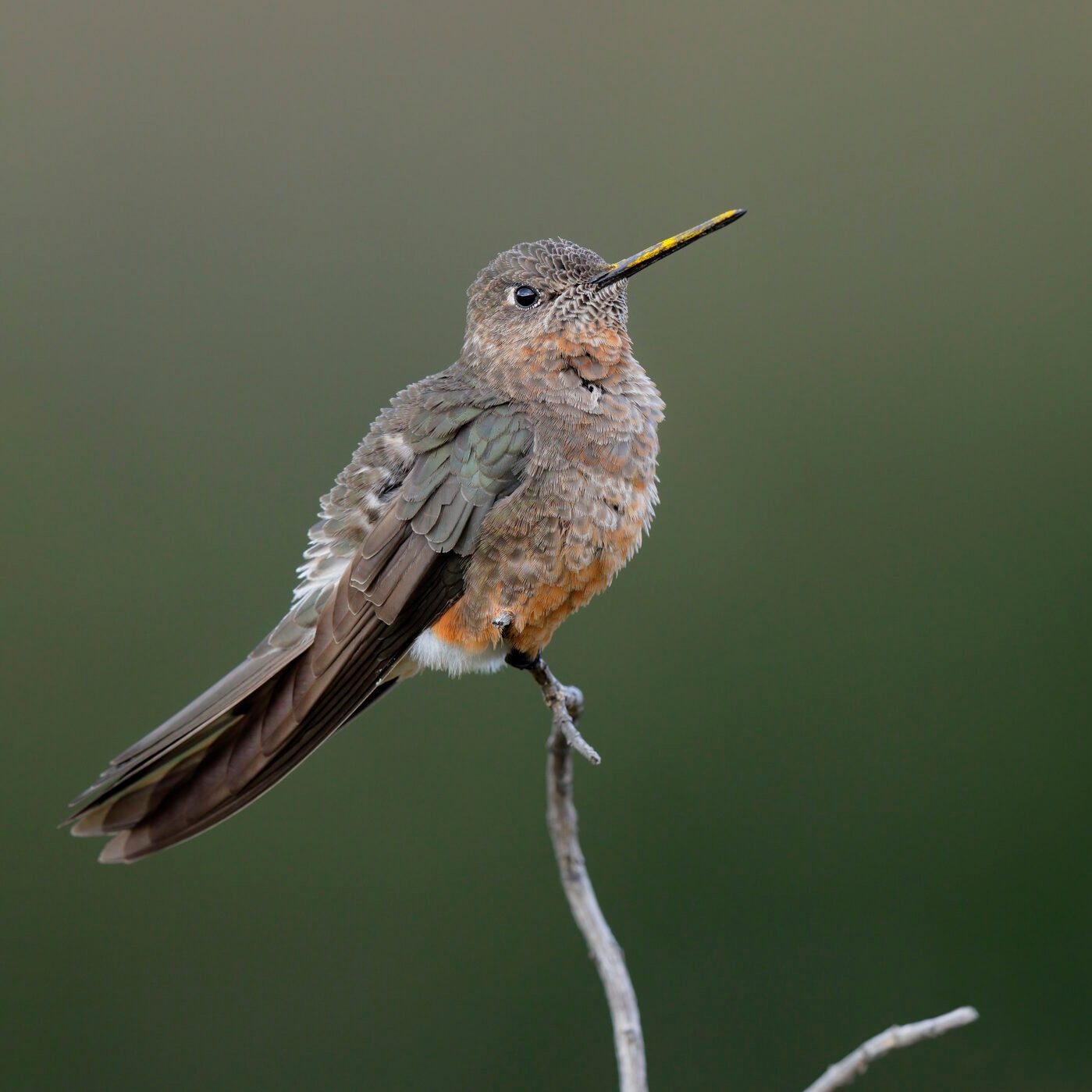Hummingbirds are known to be quite small... but this one is giant! Here's where to spot the large, awe-inspiring giant hummingbird.

Giant Hummingbirds Do Exist — Here’s Where to See One

A defining characteristic of hummingbirds — at least for those of us in North America — is their teeny size. Birders put out sugar water feeders every year in the hopes of bringing in a jewel-colored mini-bird, and many species are no larger than the palm of one’s hand. But while we usually think of hummingbirds as small, a giant hummingbird does exist… and it’s a joy to the hummingbird obsessed.
These are the different types of hummingbirds you can spot in the United States.
On This Page
Giant Hummingbird Identification

According to John Shewey, author of The Hummingbird Handbook, telling a giant hummingbird apart from its normal-sized counterparts isn’t exactly a problem. “Imagine a hummingbird bigger than the swallows we see perched on power lines—the giant hummingbird is massive for a hummingbird!” he says. At about 8 1/2 inches in length, they’re far larger than the average ruby-throat, which is only about 3 inches long.
Aside from their size, giant hummingbirds have another massively notable difference from those we’d find in a backyard: their plumage. Generally, the larger birds don’t sport the same brilliant purples, reds, and blues — they’re a dull brownish green. “There are two subspecies of the giant hummingbird, a ‘northern’ and a ‘southern’ subspecies,” John explains. “Unlike most hummingbirds, these giants don’t sport flashy iridescent feathers, but the northern subspecies male has a richer-toned, cinnamon-colored underside than the southern subspecies.”
Giant hummingbirds are the largest hummingbird in the world — but which is the smallest hummingbird?
What Do Giant Hummingbirds Eat?
Surprisingly, giant hummingbirds and smaller hummingbirds dine off the same menu. “Giant hummingbirds subsist on flower nectar from many different plants,” John says, also mentioning that they snatch bugs from the air, off of plants, or even out of spiderwebs. They’ll even stop by hummingbird feeders within their range.
Giant hummingbirds use the same “hovering” technique we see in backyard hummers, but their flight looks a bit different. “Their wingbeats are much slower when they hover, and when flying, they often alternate flapping with gliding,” John says. “When hovering, our backyard hummers flap their wings at 50 to 70 beats per second. By comparison, the giant hummingbird might seem lethargic at only 12 wingbeats per second.” He notes, however, that this species is just as graceful in the air as the hummingbirds we see at our feeders.
Get the answers to all of your hummingbird feeding questions.
Giant Hummingbird Nest
Interestingly, these birds also build the same cup-style nests as smaller hummers.
Learn about the fascinating life of a female hummingbird.
Range: Where to Find a Giant Hummingbird

To see a giant hummingbird, instead of putting out your sugar water feeder, you’ll have to get on a plane. Their range extends through much of South America’s western coast, and they don’t migrate to North America. “Seeing one requires a trip to the Andes in South America,” John says. “Various ecolodges and birding guides offer excursions and hummingbird feeding stations, and a bit of internet searching will reveal places to see these giants.”
Marvel at these jaw-dropping hummingbird facts.
About the Expert
Lifelong birding enthusiast John Shewey is a veteran writer, editor, and professional outdoor photographer, with credits in Birds & Blooms, Birdwatching, Portland Monthly, Northwest Travel & Life, and dozens of other magazines, and co-author of multiple birding books. John has photographed birds throughout the Americas.
Sources
- eBird, “Giant Hummingbird“




















